
In Finland and Sweden, every child has a right to highly subsidised pre-school education, and in both countries this is free to low-income families.
In Finland, participation in pre-school education became compulsory for six-year-olds in 2015. There is no equivalent to Ofsted; instead, settings feed information to government using computer programmes, and there are inspections for issues such as safety.
In Sweden there are formal regulators. Childcare never costs more than 3 per cent of the parents’ income per child. The maximum monthly fee for a one- to three-year-old is £122; for a three- to five-year-old it is £81.
DAYCARE CENTRES AURINGONKUKKA AND LESKENLEHTI, FINLAND
Purpose-built municipal kindergartens offering daycare in Helsinki.
Number of children:107 in Auringonkukka and 70 in Leskenlehti.
Number of staff:23 in Auringonkukka and 13 in Leskenlehti.
USP: Auringonkukka is one of five daycare centres in Helsinki that is open from 6:15am to 10pm.
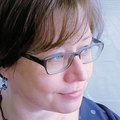 Typical day: Marja-Liisa Kärkkäinen, head of daycare unit
Typical day: Marja-Liisa Kärkkäinen, head of daycare unit
‘My days are full of variety: there are routines and sudden occurrences; tedious office work and inspiring meetings; planning and counselling; and I sometimes have the opportunity to take part in children’s activities. I’m responsible for almost everything that goes on in my centres: pedagogy, HR, budgets and safety matters. Luckily, I have a very good personnel and well-organised administration working with me. At Auringonkukka, nurses cover the evening shifts, which cater for parents who work shifts or study. It is also a training centre for kindergarten teacher students from Helsinki University.
‘Early childhood education and care (ECEC) in Finland seems to be on a threshold. There are new possibilities, challenges and even dangers ahead of us. Global changes have an influence on us; we also have to deal with insecurities in the economy, new digitalisation, immigration and right-wing populism, for instance.
‘We have a [renewed] statutory National Core Curriculum for pre-primary education, implemented in 2016, and our first mandatory National Core Curriculum for ECEC, to be implemented next August.
‘I think the new curriculum is a positive challenge for us. I’m hoping it will lessen some quality issues we have at the moment, unify the ECEC and advance equality.
‘We are funded by the budget of Helsinki City, basically by taxpayers. We could always use some more money, but the funding is relatively good (parents pay less than £300 a month). However, financial hardship in the municipal economy can be a threat to quality and equality.
‘The municipalities have by law a possibility to limit the child’s time in ECEC to 20 hours a week and raise the ratio of staff and children from 1:7 to 1:8.
‘The City of Helsinki hasn’t done that yet, and I hope our wise policy-makers keep in mind how cost-effective, high-class and well-resourced ECEC is in the long run.
‘We don’t have inspectors regularly checking the quality of care and education in Finland. The head has responsibility for keeping up the good quality in their centres.
‘But because municipal daycare is a public service, it must be transparent to both government and citizens. Our framework is monitored and inspected, but not rated. I think the general idea is that when a shortcoming is noticed, it must be dealt with as soon as possible.
‘We use computer programmes that collect data concerning ECEC, and government can monitor this in real time. We have one for individual plans, diaries and child:staff ratio.
‘There is a facility programme for building maintenance. There may be occasional inspections, like last January when Helsinki Environment Centre checked the building and maintenance.
‘We are particular about safety: there are safety plans, rehearsals and procedures for self-monitoring. And, of course, if the head or a member of staff is responsible for any negligence, she or he must answer for that.
‘At our centres, we believe that children learn mainly through interaction and play. They have plenty of time for free play and most of the teaching is done through playful activities. Our teachers and nurses have a lot of freedom to choose suitable methods and activities for their groups. They are quite sensitive to the individual developmental needs of the children.’
MÖRRINTUPA FOREST PRE-SCHOOL, FINLAND
A privately funded setting situated a few kilometres from the centre of Helsinki, housed in a century-old, two-storey home with a fireplace, a small garden with an orchard and outdoor playhouses.
Number of children:30.
Number of staff:Five.
USP:Use of two forest sites that the children walk to daily: one has large rocks and trees for gross motor development, and the other is a flatter area with trees and playhouses.
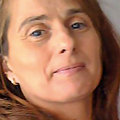 Typical day: Carita Vilamo-Nurmi, headmistress
Typical day: Carita Vilamo-Nurmi, headmistress
‘At Mörrintupa, the morning is spent in the forest, where children climb on trees and rocks, and engage in activities that develop their gross motor skills. They also have the opportunity to do handicrafts, play and observe what happens in nature. We don’t need to plan these activities with specific goals in mind, we just do them because we know children will benefit holistically in many ways.
‘For three days a week, I work alongside the children and staff here, fulfilling my role as qualified teacher and being involved in everything from outdoor activities to food preparation. On Mondays and Fridays, I work in the office, which is based at another nursery, where I complete the administrative tasks. Myself and a colleague also own three more nurseries in Helsinki: I take care of all the paperwork concerning parents, new starters and staff, along with the finance, and my colleague looks after two of the nurseries and all the staff training. I try to visit each setting once a week.
‘We follow the Waldorf pedagogy, also known as Steiner education. We do “real things” with a meaning so that the children can learn by imitating. For example, one member of staff prepares the food in the mornings and afternoons with the children; another does handcrafts like sewing or woodwork with them, and another does housework such as washing the dishes.
‘We sometimes find it difficult to integrate our pedagogy with the Finnish education ethos, which involves quite a lot of learning with communication technology. However, I think the proposed new curriculum, which is based on phenomenon-based-learning, is going in the right direction.
‘We have good relationships with the parents and they are committed to the concept that we are outdoors for so much of the day. In the winter, we ski and skate with the children regularly. In the summer, we go on a boat trip with all the families to Kaunissaari, an island near Helsinki.
‘In Finland, the government gives subsidies for families to pay for daycare fees. But in the private sector, families have to pay about 80-100 euros more.’
(The setting charges parents about 370 euros per month, with the rest of its costs met through government subsidies.)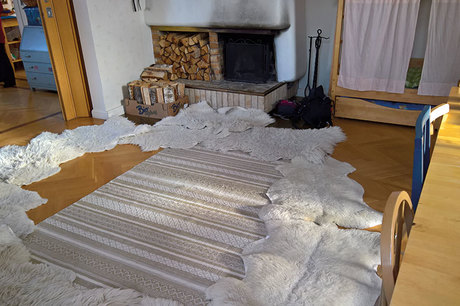
HÄLSOFÖRSKOLAN FRISKUS, SWEDEN
A private company in Stockholm that is publicly funded based on the number of children.
Number of children:30.
Number of staff: Eight.
USP:Works consciously to develop healthy living habits. It is situated in front of a frozen lake, where children go ice-skating in the winter.
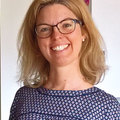 Typical day: Maria Ekeberg, manager
Typical day: Maria Ekeberg, manager
‘Hälsoförskolan (Health preschool) Friskus was founded in 2008 by my mother, Alice Ekeberg. She has now retired and the pre-school is owned and operated by me. Our main aim is for the children to be health-conscious and interested in their well-being.
‘We strive to give the children a good balance and daily routine when it comes to everything from food, movement, play and learning to relaxation.
‘They are outdoors for a lot of the day – ice-skating, skiiing and sometimes swimming – and the younger children sleep outdoors all year round, even in minus temperatures. Our educational focus is that we pick the best bits from Montessori, Reggio Emilia and we are outside in all weather.
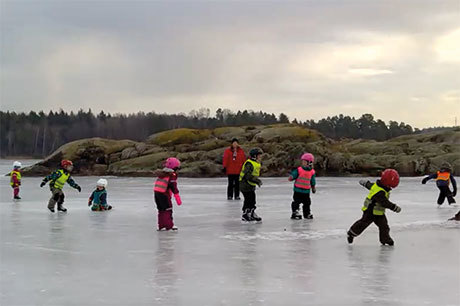
‘I’m involved in every detail of running the pre-school – from working with the children to putting out the garbage. The worst part of the job is when I do the food shop alone each week – it’s about 220 pounds and I pack it, load it and then carry it to the pre-school.
‘I also have responsibility for the staff, payroll management, accounting, financial statements and annual reports. I don’t get any help with any part of the business. I run it entirely alone – and often I feel extremely fragmented.
‘A growing problem facing the Swedish early years sector right now is that the municipal compensation gets worse and worse every year. The low compensation for children, in conjunction with the personnel costs increasing to such an extent, means it is very difficult for pre-schools to keep afloat. We can’t control our revenue, so instead we have to be very careful to limit our spending. That’s why I do everything myself.
‘I usually start work at 8am, with a cup of coffee in hand while the staff serve breakfast to the children. It’s important for me to set aside some time first thing to talk to staff properly so that I can determine the atmosphere and help if there are any issues to deal with.
‘Over the past six months, I have been working with the children every day because we are one member of staff down. There’s a shortage of qualified pre-school teachers in the sector at present. Many are retiring and too few are trained to do the job. This makes it very difficult to recruit.
‘I have no office at the pre-school so I sit down with my computer somewhere where there is space. Often, a couple of children will join me and they will ask me for help with something or we will talk.
‘After having lunch together, I go home to my official office where I work in peace and quiet for the first time during the day.
‘I also write a blog where parents can see pictures and read about what their children have been doing. This links into the Swedish pre-school curriculum.’
VITA BERGEN PRE-SCHOOL, SWEDEN
Part of Pysslingen, a chain of 111 pre-schools spread across Sweden, this privately funded setting is situated in an apartment block in the centre of Stockholm.
Number of children:52.
Number of staff: Three teachers and six assistants.
USP: It is an LGBT (lesbian, gay, bisexual and transgender)-certified pre-school, which means staff have undergone training to work with issues of human rights, equality and anti-discrimination, and to foster and promote a more inclusive environment.
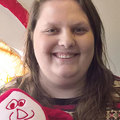 Typical day: Karro Olofsson, pre-school teacher
Typical day: Karro Olofsson, pre-school teacher
‘Each day, I work with a group of 11 children in the one- to three-year-old class, along with a pre-school assistant. There are two groups of 11 children, and because I am the only qualified teacher in the department, I am responsible for them all. I have to ensure that every child is challenged and supported in their development, and that we tailor our teaching to help them meet their individual learning goals. I take some time out each day to document this, which is a requirement of the Swedish pre-school curriculum.
‘Most of our mornings are spent outdoors. When the children arrive, usually from 7am, we have breakfast and then all the children, including the three- to five-year-olds who are based in the adjacent apartment, play in the communal yard, which contains a sandpit, a play house and climbing frames. We then set off to the park, usually at around 9.15am, where children take part in planned activities aimed at developing their social, communication skills and vocabulary.
‘After lunch, we offer children a structured learning session – reading, writing, painting or sticking – or they have free play time, where they can play with toys or do construction or engage in role play in the fantasy room. Our resources around the nursery reflect our inclusivity. For example, children’s books contain a variety of pronouns – of families with different skin tones, languages, sexual orientation and other diversities.
‘In the fantasy room, we strive to inspire the children to express themselves, so there are different pictures of body diversity, sexual diversity, ethnicity and variation of functionality – we do not use the term disability – put up around the room.
‘We feel it’s up to the child to decide its gender. Instead of saying “boy” we use the child’s given name. In the older groups, we introduce a gender-free pronoun, ‘ze/they’. Each day, children have the opportunity to place a picture of themselves beneath three pronouns on the board, ‘he’, ‘she’ or ‘they’. This represents what they feel they are on any given day, and it changes. They are also free to change their birth name, and we take this very seriously.
‘Most of our children come from mixed-sex families, but we have some rainbow – same sex – families. And there are many diversities in race, ethnicity, religion and language. We see every family as unique. We are one of four LGBT-certified nurseries in Stockholm; the others have been certified for longer and have more diverse families.’
FURTHER INFORMATION
These settings were all visited on a recent Nursery World/Master Travel tour of Finland and Sweden. A tour to Denmark is running from 27 May to 3 June 2017, and a visit to China is planned for 29 August to 12 September. For more information, see www.mastertravel.co.uk/tours









